*****************************************************************************************************************************************************************
Plant & Equipment
*****************************************************************************************************************************************************************

The Michigan 125 wheel loader is required to operate as a shunter on a quayside siding,
but will actually running on hidden rail wheels. It won’t be running over any points, just
about 18 inches of track, partly on the feeder canal quay and then under the bridge at the
end of the main yard / scrap yard where a loco will take over. I also have found a sound
file of one working and hope to have a speaker under the board to give it an added dimension.

With a few additional detail parts and replacement wheels from a EFE model, this Matchbox
Iron Fairy was produced between 1969 and 1971 to a scale of 1:80.

A cab interior was constructed onto the chassis, featuring a driver and dashboard with 4
levers for the crane operation to raise & lower the hook, extend boom, rotate turret,
and lift & lower gib.

A relatively quick and easy conversion from a toy into a scale model.

One of the cranes in the Morfa Bank scrap yard is a former Matchbox Iron Fairy crane.

The Eastwell Ironstone Company's back hoe is featured here (hired in as part of a redevelopment
project), whilst some maintenance is being carried out on a track type loader behind.

A rear view of the Insley model K Back Hoe, a whitemetal
HO scale kit from the Woodland Scenics HO scale range
(ref D237).

The track type loader is also hired in from the Eastwell Ironstone
Company and is another Woodland Scenics whitemetal kit
(ref D235).

Other hired in dozers working at demolition sites in the area, the green bulldozer is a
Langley whitemetal kit of a International Harvester TD6 bulldozer (1950s era),
whilst the blue bulldozer is from the Woodland Scenics range
(ref D233).
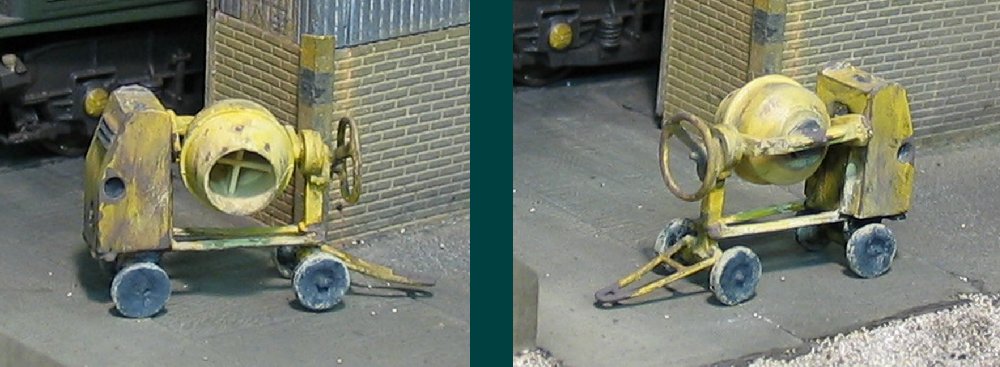
A Langley whitemetal kit of a Benford cement mixer.

Next up is an agricultural slurry tanker. The tank barrel is taken from a Kibri farm yard
set (Part No. 10908) and whilst the kit can be built into just such a vehicle, its appearance
is more modern than would be appropriate for my early 60s time frame. Searching through various
online farm auctions gave enough of an idea to allow construction of this freelance vehicle.
The front and rear aspects of the tank; to the front can be seen the motor which would be
driven via the drive shaft of the hauling tractor and could be used to either create pressure
for propelling the slurry or a vacuum for refilling the tank. To the rear is the output nozzle
which utilises a sprung loaded valve opened by compressed air.

A Wiking fork lift truck with added overhead guard mesh, seen at Hornsey Road depot. The
model has been further enhanced by reducing the amount of wheels on the front axle, and
the addition of lift and tilt levers made from track pins.

Coventry Climax Engines originally
built engines for use in cars and buses before eventually becoming involved with the
manufacture of fork lift trucks (their ET 199 model of 1946 was heralded as the first to
be manufactured in the UK). In 1958 they launched their 'Universal' model which, as the
name suggests, utilised an array of standard components to deliver bespoke trucks.
Not unsurprisingly dimensioned drawings of these vehicles are scant and so a careful study
of sales brochures along with online photos helped to build up an idea of a build schedule.
To this end the wheel sizes helped immensely (the front set are from a Coopercraft Monarch
lorry kit and the rear from the same Kibri kit that the slurry tank emanated from). By
using the size of these as a guide then it was possible to determine relative dimensions
of other components and thus help to achieve a well proportioned vehicle. The spares box
gave up a few helpful pieces (including the 2mm scale lettering for the rear of the engine
compartment) but in the main everything has been built from plain sheet or Evergreen strip materials.

This battery electric tug came from a air force ground crew accessory pack and has found a
new home at the milk depot. Partially painted in Metrobus Verona green it was previously in
use at the bus garage at Wibdenshaw.

Here's a couple of whitemetal fork lift trucks, the blue one having been made from the
Knightwing whitemetal kit with additional detail and a replacement meshed overhead guard. The
yellow model is a Langley whitemetal kit of a Clark Stalwart fork lift truck from the 1960s era.

The fork lift trucks finished and ready for service.

A growing collection of plant and equipment ready for hire, mostly whitemetal kits.
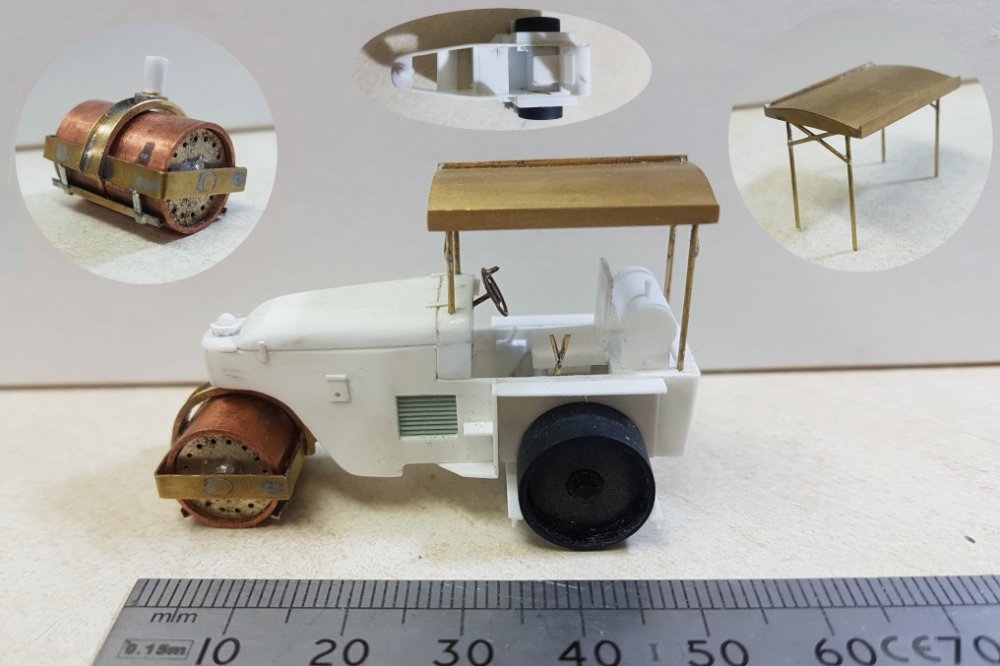
Due to a protracted and as yet unfinished house move, scope for modelling has understandably
suffered and with most of my reference literature packed away then the building of accurate
railway stock is on hold for the time being. So to fill a gap, attention has switched to a
more freestyle project in the form of a road roller. The end result is not a copy of any
one particular manufacturer's vehicle but an amalgam of various common elements gleaned
from studying online images of such vehicles.
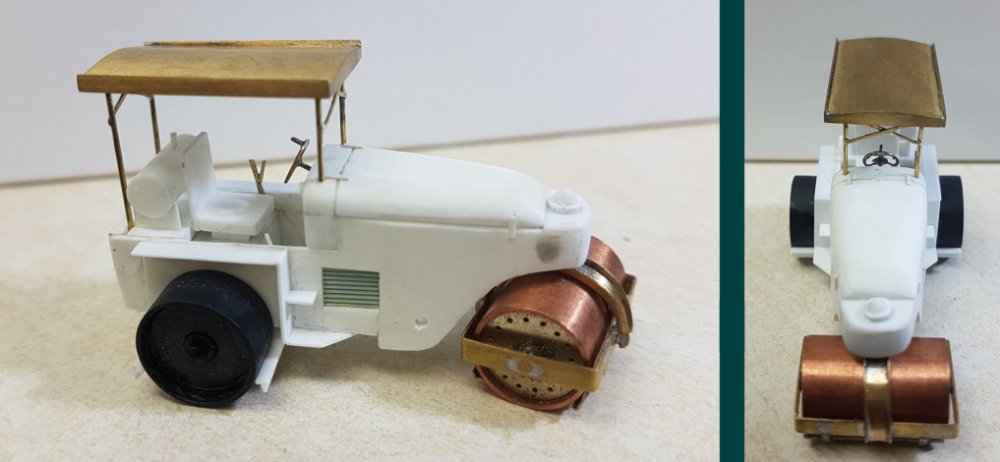
By adopting a 'magpie' approach and raiding my stash of odds & sods, a reasonable looking
vehicle (in my eyes admittedly!)has been concocted - the front roller is actually a 10mm
end feed straight coupling as used in plumbing and its etched inserts were originally
intended to upgrade an Airfix Bulleid pacific kit!
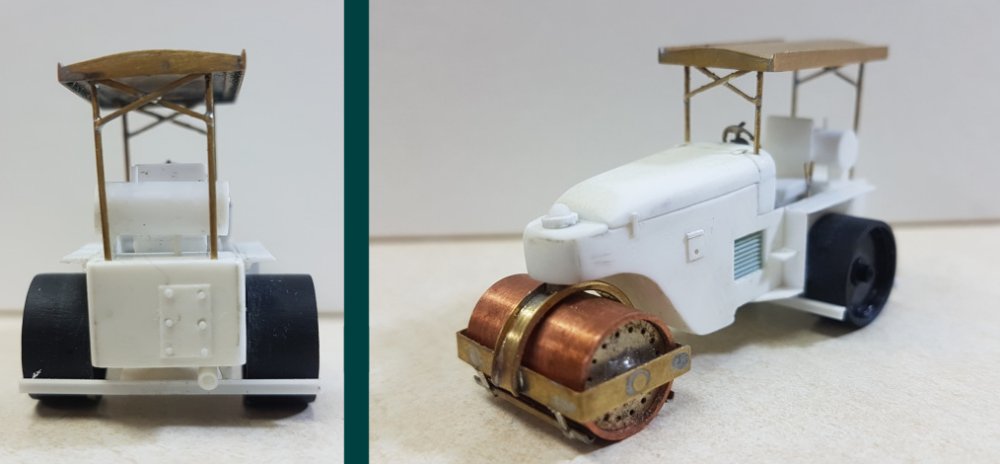
On bigger road rollers the rear wheels tended to be a lot larger than the rolling drum so
could be depicted using a 15mm version of the end feed coupling but on smaller ones the wheels
were not much larger and so in this instance they have been constructed from the wheel sets of
a Triang Trestrol wagon which have been laminated together whilst the rest of the construction
has relied heavily on plastic profiles and bits of brass section.
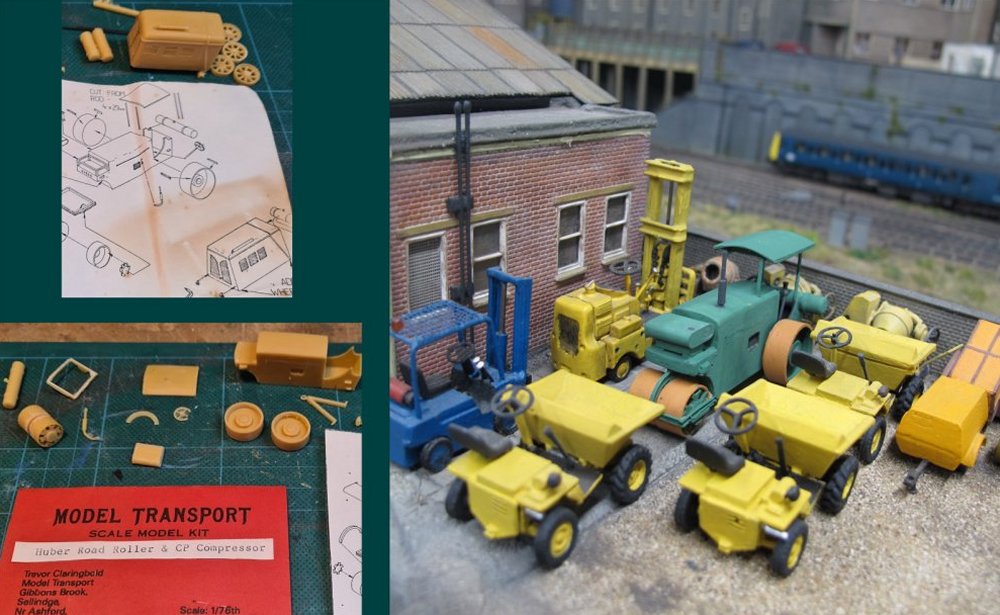
A crumbly old resin road roller kit arrived on the workbench courtesy of Steve Carter,
who thought it may be either bin fodder or something to tuck at the back of the plant
hire yard. It hasn't turned out too bad, and bolsters the equipment on show, even if
it turns to dust in a few years time!

Hymac excavator at work in the Morfa bank scrapyard.

Whitemetal kit of a Dumper truck and heavily modified diecast excavator at Morfa Bank Sidings.
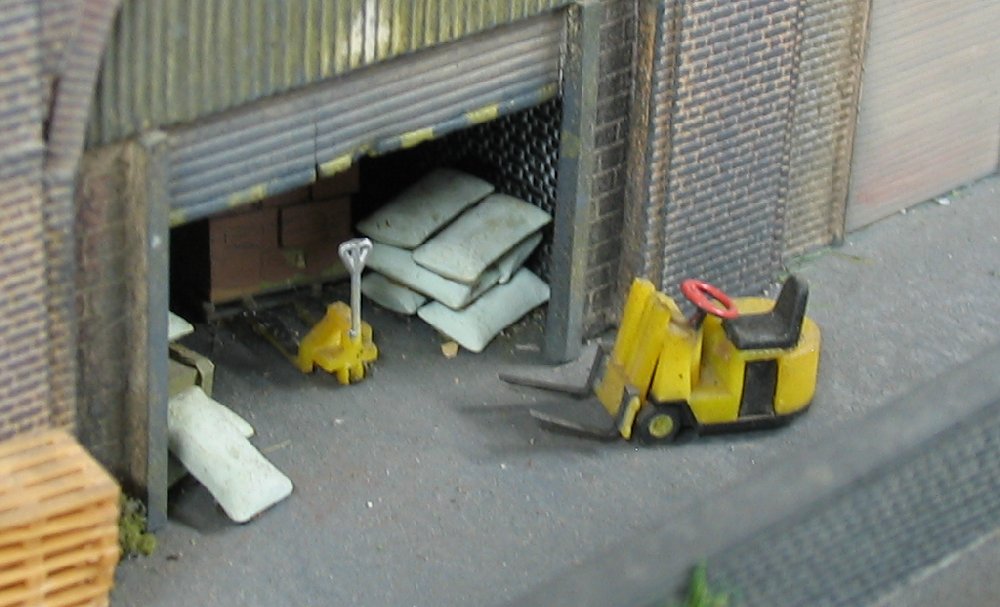
Small materials handling equipment from the Kibri range.
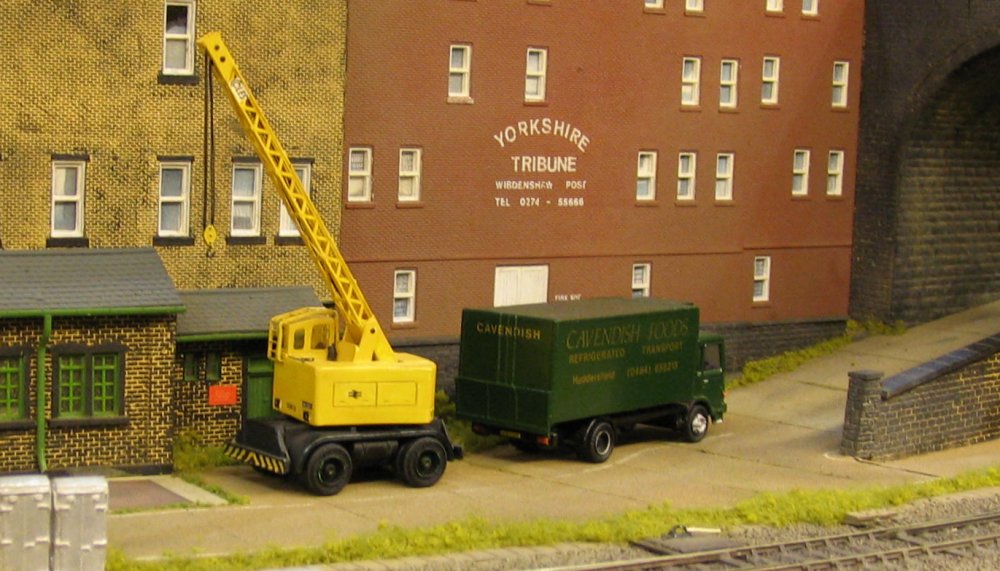
A scratch-built Coles crane by Tony Wood.
*****************************************************************************************************************************************************************




























